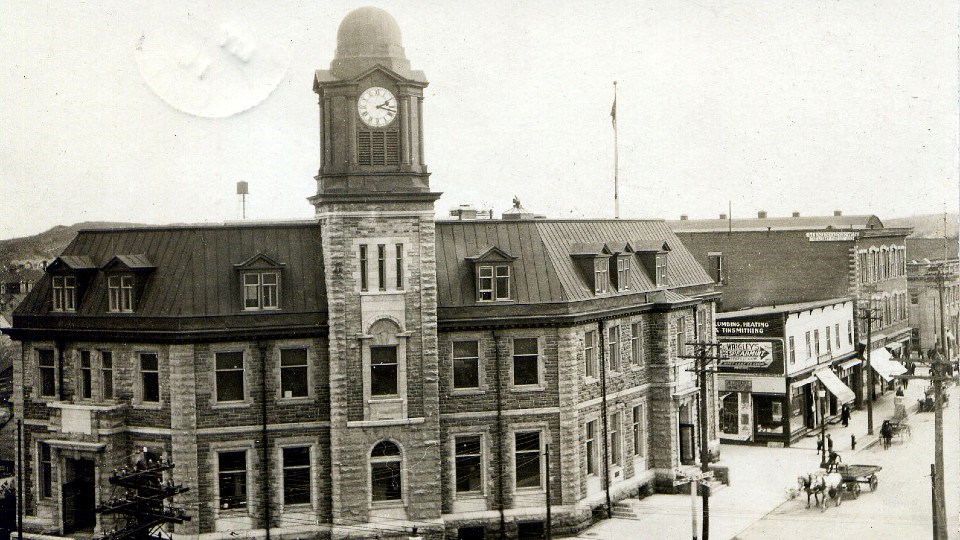The loss of Sudbury's old post office building at Elm and Durham streets is a cautionary tale. A Herculean effort should be employed to preserve important heritage buildings to be enjoyed as time machines to the past by future generations.
In other Canadian communities, many Victorian and Edwardian-era post offices are designated heritage buildings and repurposed as municipal offices, museums, retirement homes and even trendy cafes.
If there had been a campaign to save the post office in the 1950s, Sudburians could take pride in having a signature building, a work of art, on its main street designed by David Ewart, Canada's leading architect before the First World War.
Ewart, the Department of Public Works’ chief architect, and his staff were responsible for the design and construction of more than 340 federal buildings and substantial renovations including castle-like armouries and distinctive post offices in communities from coast to coast.
The Ewart post office in Sault Ste. Marie, Ont., is a three-story red brick and stone building featuring a clock tower. It was purchased in 1982 by the city for use as the Sault Ste. Marie Museum.
The federal building on Main Street in Newmarket, Ont., was converted into a retirement residence known as the Clock Tower Inn, but has since closed and the property is up for sale.
In Alberta, the two-storey brick South Edmonton Post Office, designed by Ewart, is an example of Edwardian Classical freestyle design with ornamental limestone columns, arches, contrasting brickwork and a clock tower.
The building, designated a Provincial Historic Resource in 1985, now houses a restaurant.
In Ottawa, Ewart buildings include the imposing Tudor-Gothic Connaught Building, headquarters of Revenue Canada, and the Royal Canadian Mint, a Tudor-Revival style limestone building on Sussex Drive.
Ewart also designed the Victoria Memorial Museum in Ottawa, which is now the Canadian Museum of Nature, a castle-like structure described as Scottish Baronial in design.
Building Ottawa's website states, "David Ewart not only added tremendously to the administrative capacity of Ottawa through his design and commissioning of many departmental buildings, but he also (perhaps unintentionally) helped to establish Ottawa as a major tourist destination."
Born in Scotland, Ewart apprenticed in his father’s construction firm and it is believed he studied architecture at the School of Arts in Edinburgh.
In April 1871, at the age of 30 and recently married, he came to Canada where he secured a position with the Department of Public Works. He became chief architect in 1896.
After his retirement, he was retained as a consulting architect until his death in 1921.
Ewart retired in 1914, making Sudbury's post office, officially christened the Dominion Government Building, one of the last he would have overseen as chief architect.
On Nov. 18, 1915, Nipissing MP and federal cabinet minister Frank Cochrane attended the opening of the Romanesque Revival building.**
The impressive grey stone structure cost $125,000 to build and was topped with a tower clock imported from England.
A sacrifice to modernity, the building was razed in 1959 to make room for a multi-storey office building and Woolworth's, a symbol of the city's post-World War Two prosperity and optimism.
Original stone discarded from the post office was used on the exterior of St. Andrew the Apostle Church on Barrydowne Road. Some stone was used as fill on Highway 17. No one knows where the clock tower went.
In 1998, Woolworth's and the office building were demolished. Today, a parking lot at the corner of Elm and Durham is a tragic reminder of short-sightedness.
Vicki Gilhula is a freelance writer. She is a former editor of Northern Life and Sudbury Living magazine, and has a special interest in local history. Then and Now is made possible by our Community Leaders Program.
**An earlier version of this story incorrectly stated Frank Cochrane was the Sudbury MP in 1915. That has been corrected.
